Abstract
1. The fast-twitch flexor digitorum (the lateral head; equivalent to the flexor hallucis longus) and slow-twitch soleus muscles of the cat were denervated, and the two nerves immediately reunited to one or the other muscle. Contraction times of the dually reinnervated muscle were examined 9 weeks post-operatively in response to separate stimulation of its own and the foreign nerve. Over a 5 week period before the terminal experiment, a variety of artificial activity patterns was imposed on the two nerves.
2. Following the dual-union operation, the flexor digitorum muscle was preferentially reinnervated by its own nerve. In contrast, the soleus muscle showed no evidence of preferential reinnervation.
3. When neural activity was not artificially modified, the dually reinnervated flexor digitorum or soleus muscle showed faster contractions in response to stimulation of the flexor digitorum nerve than to stimulation of the soleus nerve.
4. Following a 5 week period in which neural activity was virtually eliminated by cord transection or in which the two nerves were stimulated at the same frequency, the contraction times of the dually reinnervated soleus muscle were the same in response to stimulation of either nerve.
5. In contrast, under the experimental conditions described above (cord transection or nerve stimulation), the dually reinnervated flexor digitorum muscle showed a significantly faster contraction in response to stimulation of its own nerve than to stimulation of the soleus nerve.
6. It is concluded that, when neural activity is absent or identical in pattern, motoneurones normally innervating the fast- or slow-twitch muscles exert the same influence on contraction times of the soleus muscle.
7. The dependence of contraction times of the dually reinnervated flexor digitorum muscle upon the type of the innervating motoneurone may be explained either by selective reinnervation of a particular group of muscle fibres or by different trophic substances emanating from the motoneurones.
Full text
PDF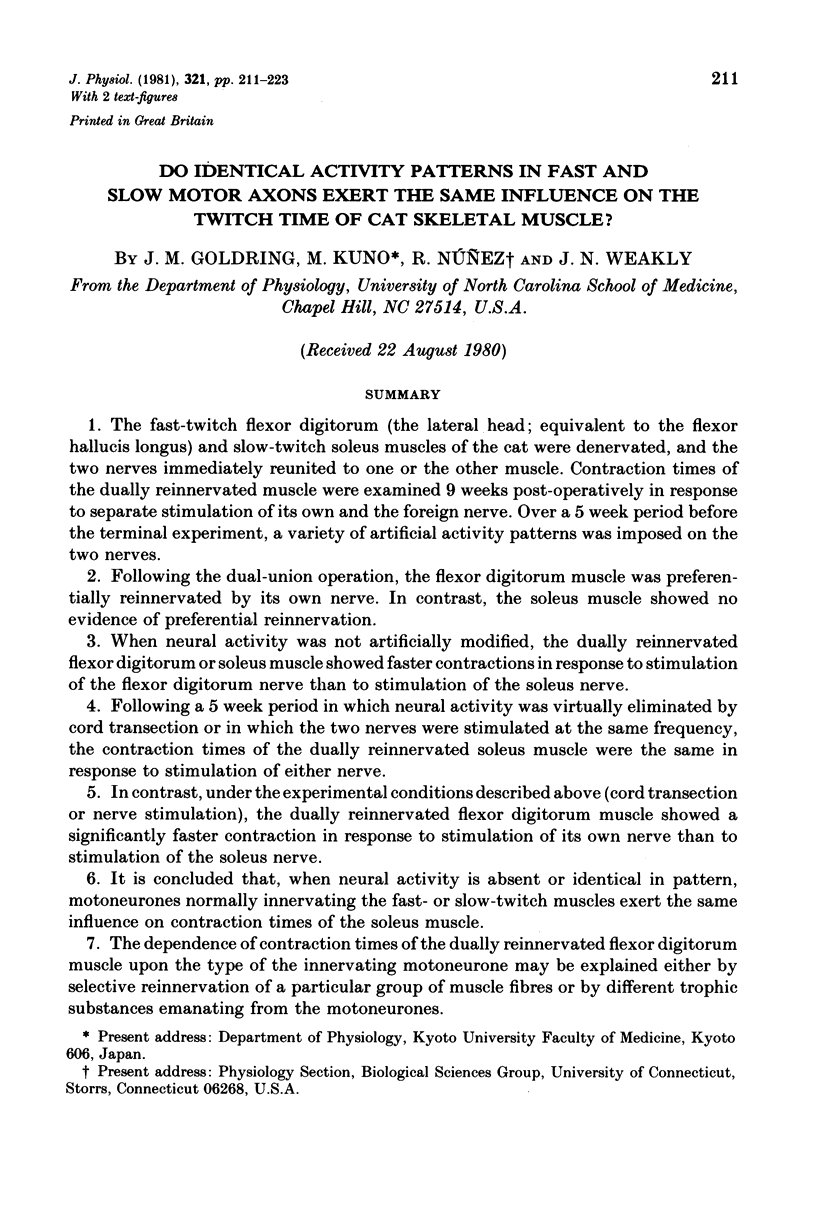
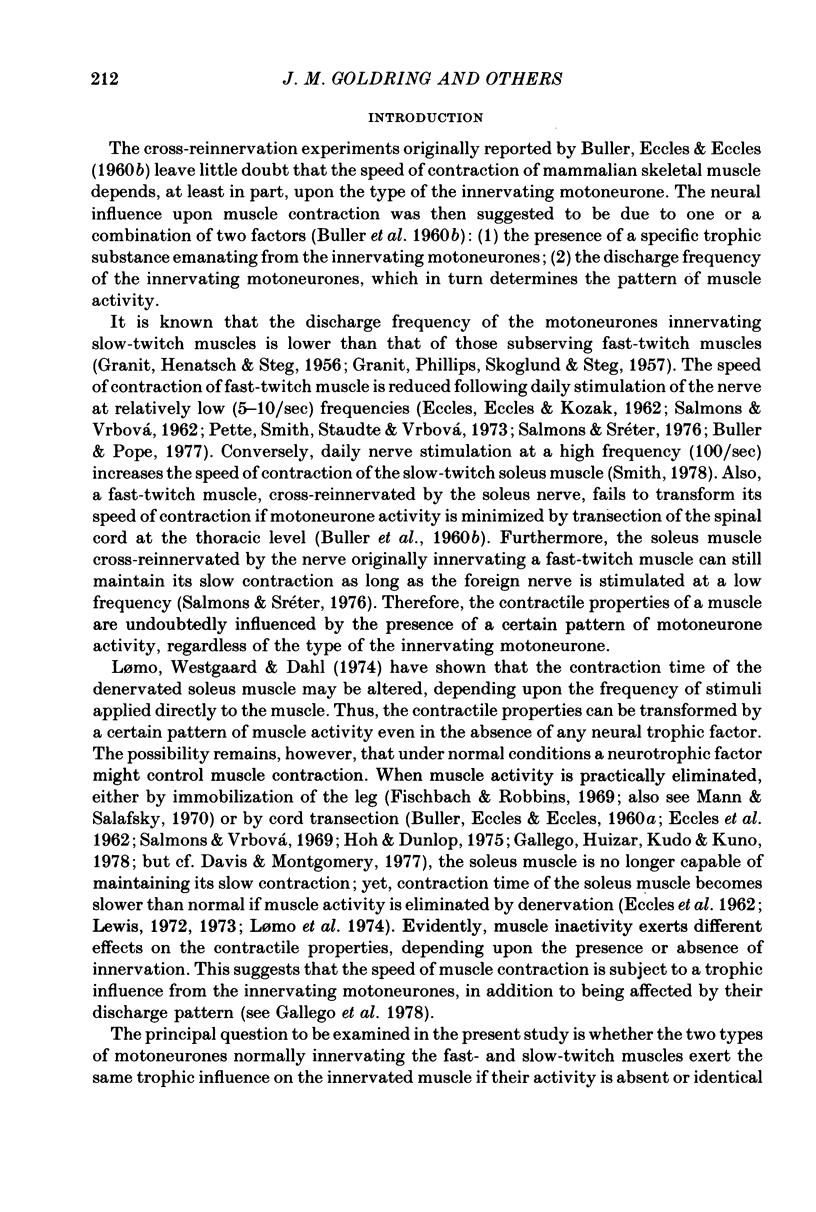
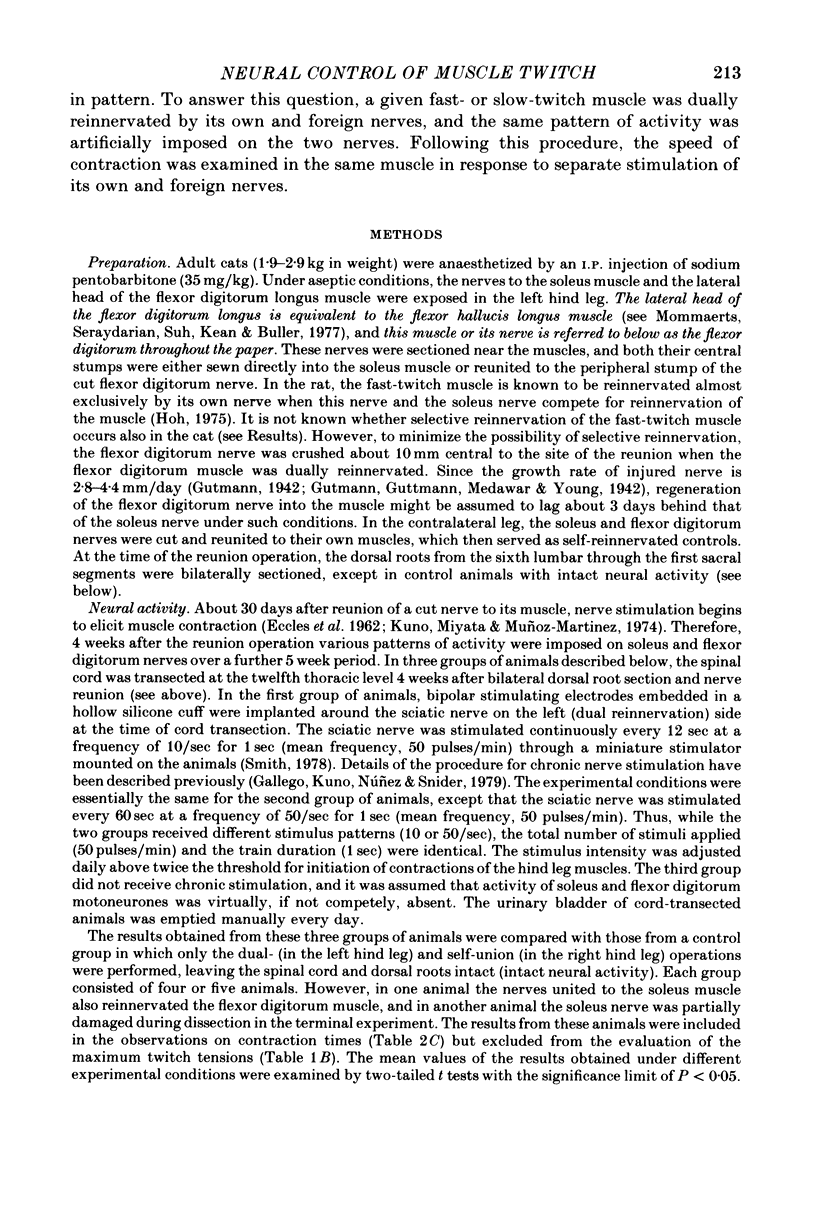
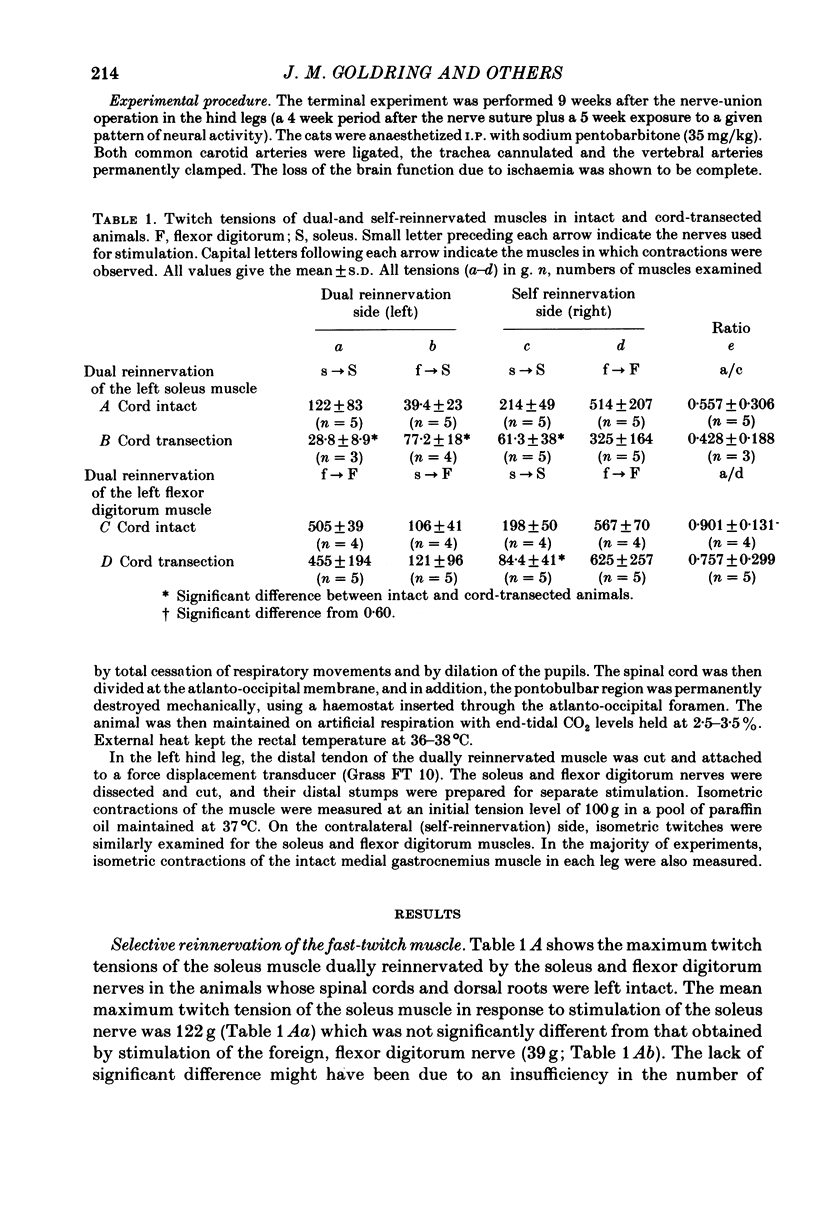
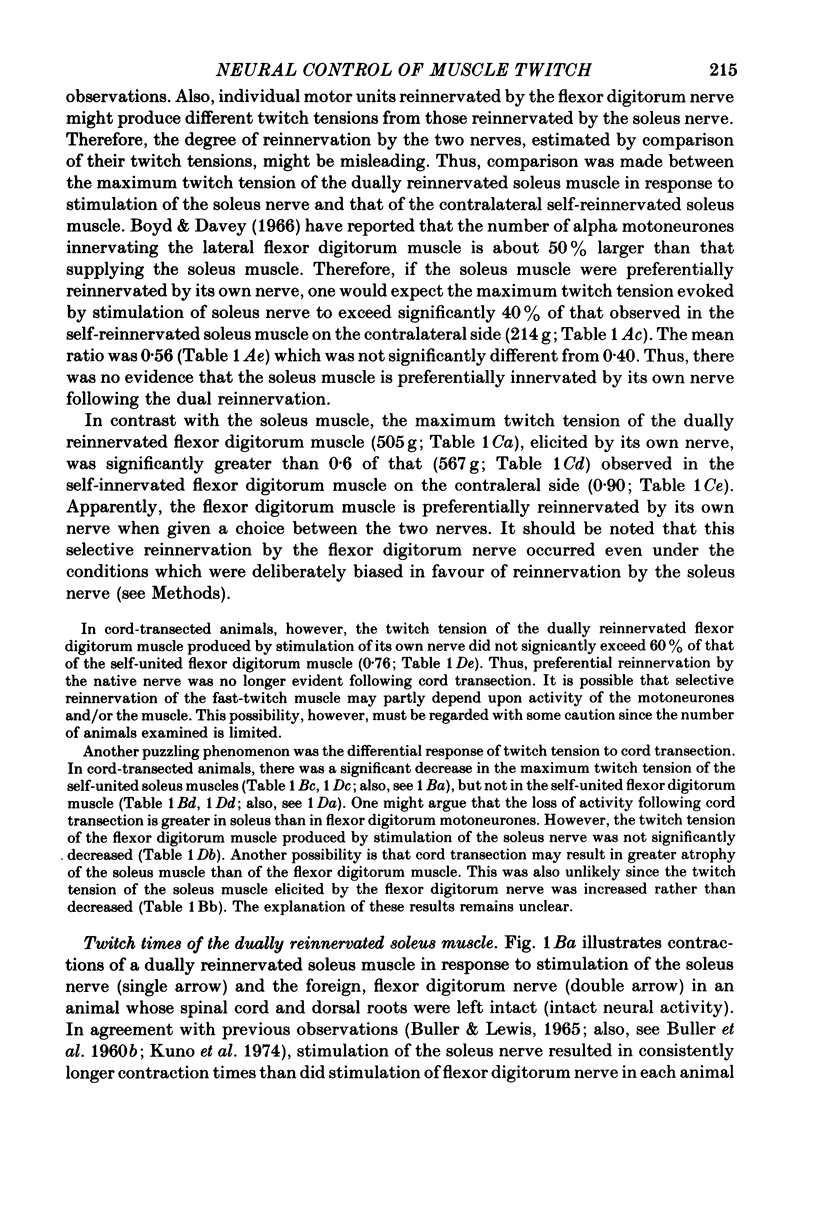

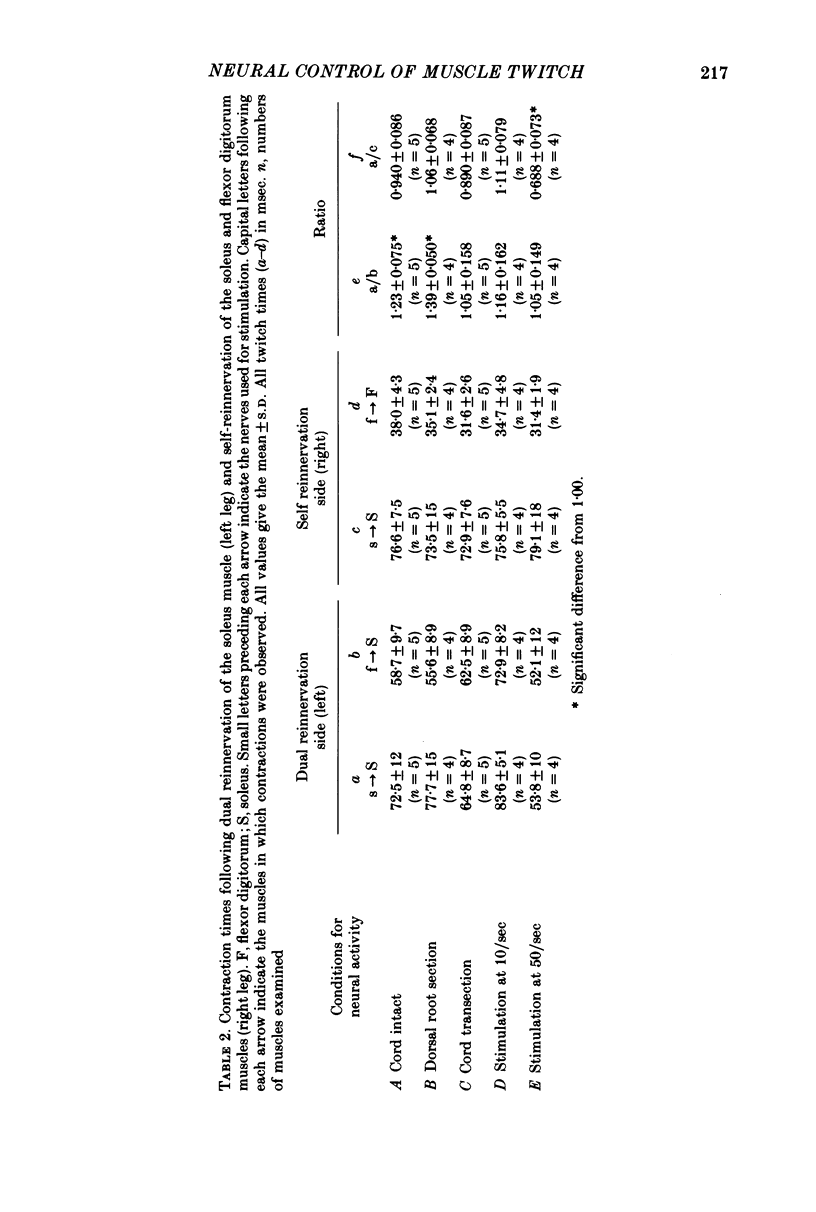

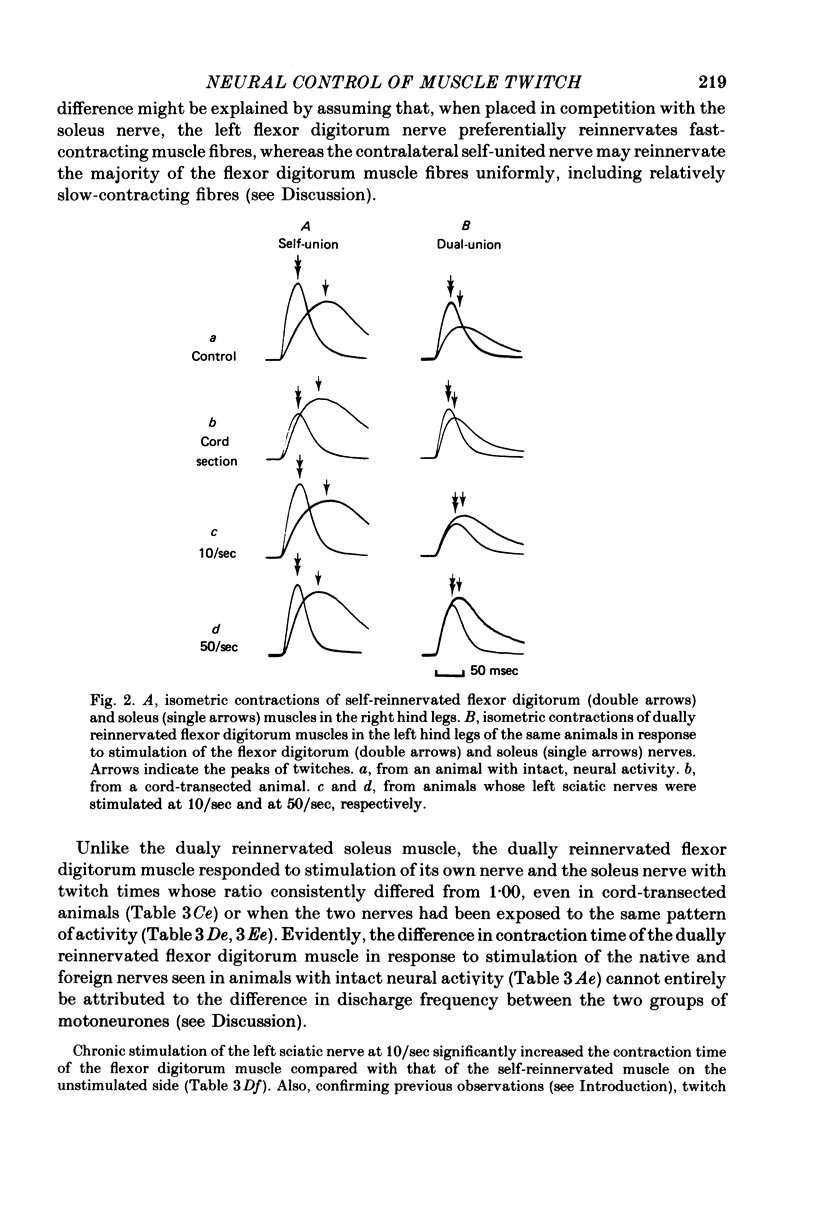

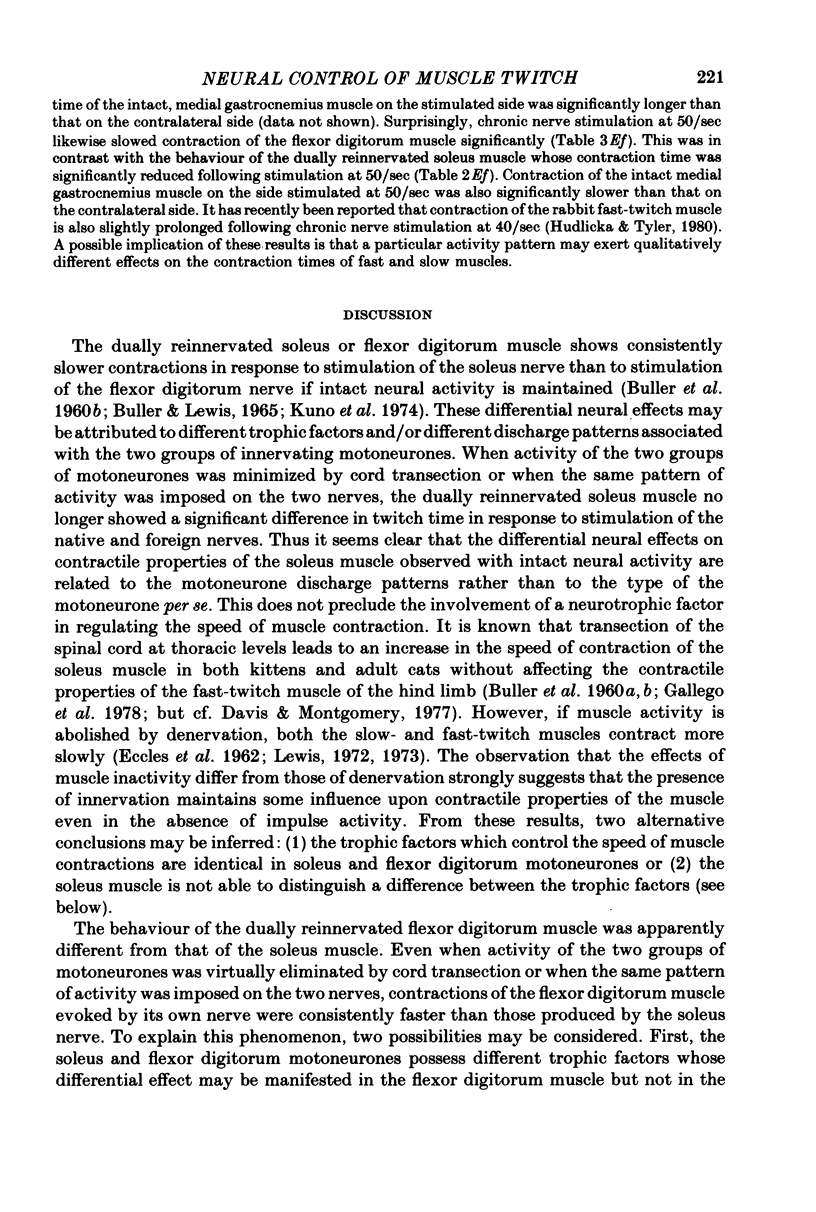
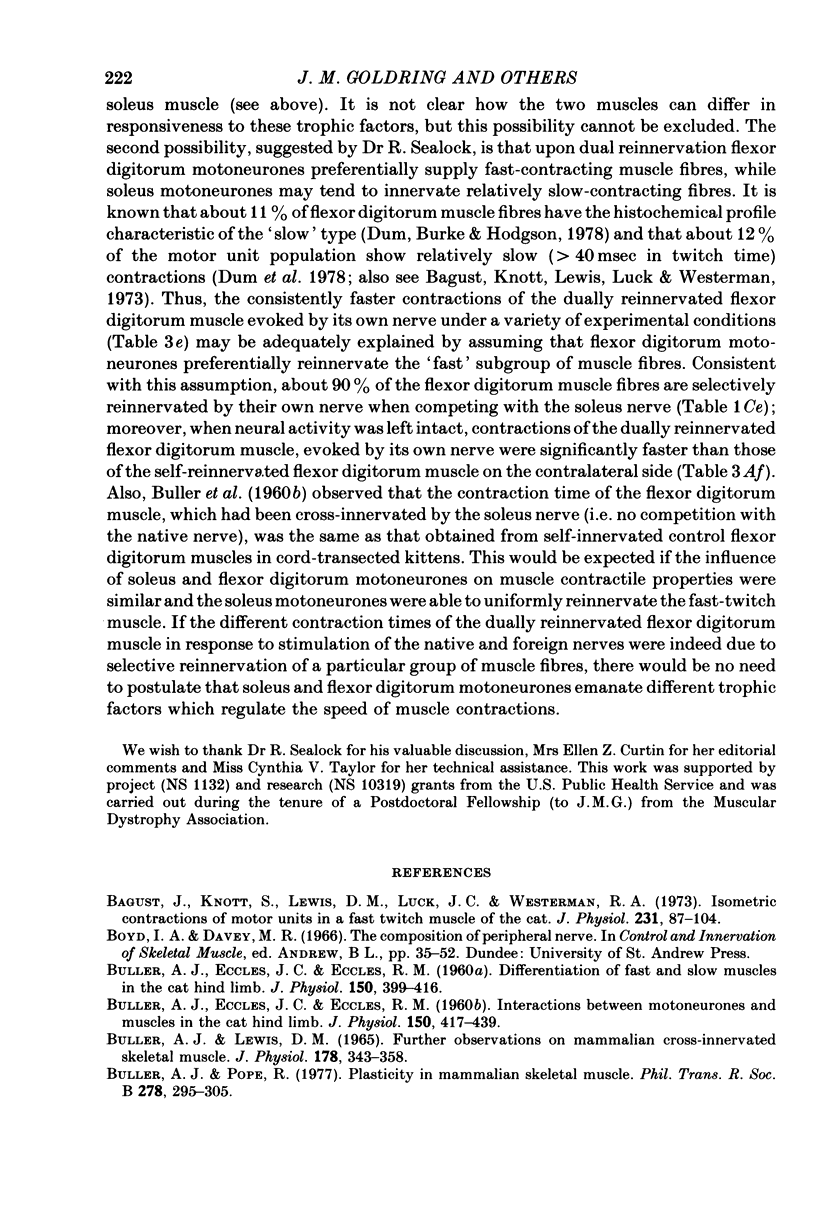
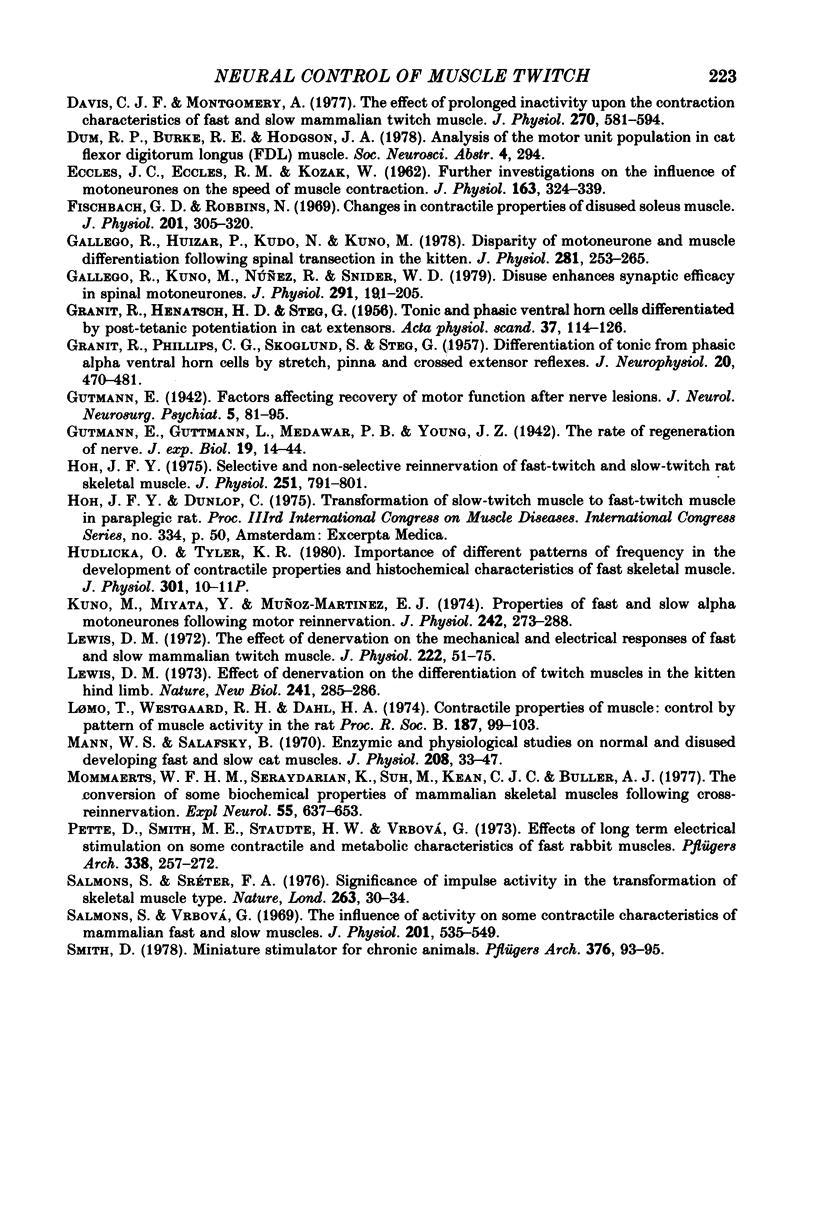
Selected References
These references are in PubMed. This may not be the complete list of references from this article.
- BULLER A. J., ECCLES J. C., ECCLES R. M. Differentiation of fast and slow muscles in the cat hind limb. J Physiol. 1960 Feb;150:399–416. doi: 10.1113/jphysiol.1960.sp006394. [DOI] [PMC free article] [PubMed] [Google Scholar]
- BULLER A. J., ECCLES J. C., ECCLES R. M. Interactions between motoneurones and muscles in respect of the characteristic speeds of their responses. J Physiol. 1960 Feb;150:417–439. doi: 10.1113/jphysiol.1960.sp006395. [DOI] [PMC free article] [PubMed] [Google Scholar]
- BULLER A. J., LEWIS D. M. FURTHER OBSERVATIONS ON MAMMALIAN CROSS-INNERVATED SKELETAL MUSCLE. J Physiol. 1965 May;178:343–358. doi: 10.1113/jphysiol.1965.sp007631. [DOI] [PMC free article] [PubMed] [Google Scholar]
- Bagust J., Knott S., Lewis D. M., Luck J. C., Westerman R. A. Isometric contractions of motor units in a fast twitch muscle of the cat. J Physiol. 1973 May;231(1):87–104. doi: 10.1113/jphysiol.1973.sp010221. [DOI] [PMC free article] [PubMed] [Google Scholar]
- Buller A. J., Pope R. Plasticity in mammalian skeletal muscle. Philos Trans R Soc Lond B Biol Sci. 1977 Apr 26;278(961):295–305. doi: 10.1098/rstb.1977.0043. [DOI] [PubMed] [Google Scholar]
- Davis C. J., Montgomery A. The effect of prolonged inactivity upon the contraction characteristics of fast and slow mammalian twitch muscle. J Physiol. 1977 Sep;270(3):581–594. doi: 10.1113/jphysiol.1977.sp011970. [DOI] [PMC free article] [PubMed] [Google Scholar]
- Eccles J. C., Eccles R. M., Kozak W. Further investigations on the influence of motoneurones on the speed of muscle contraction. J Physiol. 1962 Sep;163(2):324–339. doi: 10.1113/jphysiol.1962.sp006978. [DOI] [PMC free article] [PubMed] [Google Scholar]
- Fischbach G. D., Robbins N. Changes in contractile properties of disused soleus muscles. J Physiol. 1969 Apr;201(2):305–320. doi: 10.1113/jphysiol.1969.sp008757. [DOI] [PMC free article] [PubMed] [Google Scholar]
- GRANIT R., HENATSCH H. D., STEG G. Tonic and phasic ventral horn cells differentiated by post-tetanic potentiation in cat extensors. Acta Physiol Scand. 1956 Sep 26;37(2-3):114–126. doi: 10.1111/j.1748-1716.1956.tb01347.x. [DOI] [PubMed] [Google Scholar]
- GRANIT R., PHILLIPS C. G., SKOGLUND S., STEG G. Differentiation of tonic from phasic alpha ventral horn cells by stretch, pinna and crossed extensor reflexes. J Neurophysiol. 1957 Sep;20(5):470–481. doi: 10.1152/jn.1957.20.5.470. [DOI] [PubMed] [Google Scholar]
- Gallego R., Huizar P., Kudo N., Kuno M. Disparity of motoneurone and muscle differentiation following spinal transection in the kitten. J Physiol. 1978 Aug;281:253–265. doi: 10.1113/jphysiol.1978.sp012420. [DOI] [PMC free article] [PubMed] [Google Scholar]
- Gallego R., Kuno M., Núez R., Snider W. D. Disuse enhances synaptic efficacy in spinal mononeurones. J Physiol. 1979 Jun;291:191–205. doi: 10.1113/jphysiol.1979.sp012807. [DOI] [PMC free article] [PubMed] [Google Scholar]
- Hoh J. F. Selective and non-selective reinnervation of fast-twitch and slow-twitch rat skeletal muscle. J Physiol. 1975 Oct;251(3):791–801. doi: 10.1113/jphysiol.1975.sp011122. [DOI] [PMC free article] [PubMed] [Google Scholar]
- Kuno M., Miyata Y., Muñoz-Martinez E. J. Properties of fast and slow alpha motoneurones following motor reinnervation. J Physiol. 1974 Oct;242(1):273–288. doi: 10.1113/jphysiol.1974.sp010706. [DOI] [PMC free article] [PubMed] [Google Scholar]
- Lewis D. M. Effect of denervation on the differentiation of twitch muscles in the kitten hind limb. Nat New Biol. 1973 Feb 28;241(113):285–286. doi: 10.1038/newbio241285a0. [DOI] [PubMed] [Google Scholar]
- Lewis D. M. The effect of denervation on the mechanical and electrical responses of fast and slow mammalian twitch muscle. J Physiol. 1972 Apr;222(1):51–75. doi: 10.1113/jphysiol.1972.sp009787. [DOI] [PMC free article] [PubMed] [Google Scholar]
- Lomo T., Westgaard R. H., Dahl H. A. Contractile properties of muscle: control by pattern of muscle activity in the rat. Proc R Soc Lond B Biol Sci. 1974 Aug 27;187(1086):99–103. doi: 10.1098/rspb.1974.0064. [DOI] [PubMed] [Google Scholar]
- Mann W. S., Salafsky B. Enzymic and physiological studies on normal and disused developing fast and slow cat muscles. J Physiol. 1970 May;208(1):33–47. doi: 10.1113/jphysiol.1970.sp009104. [DOI] [PMC free article] [PubMed] [Google Scholar]
- Mommaerts W. F., Seraydarian K., Suh M., Kean C. J., Buller A. J. The conversion of some biochemical properties of mammalian skeletal muscles following cross-reinnervation. Exp Neurol. 1977 Jun;55(3 Pt 1):637–653. doi: 10.1016/0014-4886(77)90290-4. [DOI] [PubMed] [Google Scholar]
- Pette D., Smith M. E., Staudte H. W., Vrbová G. Effects of long-term electrical stimulation on some contractile and metabolic characteristics of fast rabbit muscles. Pflugers Arch. 1973 Feb 6;338(3):257–272. doi: 10.1007/BF00587391. [DOI] [PubMed] [Google Scholar]
- Salmons S., Sréter F. A. Significance of impulse activity in the transformation of skeletal muscle type. Nature. 1976 Sep 2;263(5572):30–34. doi: 10.1038/263030a0. [DOI] [PubMed] [Google Scholar]
- Salmons S., Vrbová G. The influence of activity on some contractile characteristics of mammalian fast and slow muscles. J Physiol. 1969 May;201(3):535–549. doi: 10.1113/jphysiol.1969.sp008771. [DOI] [PMC free article] [PubMed] [Google Scholar]


